First observations: there used to be lots, and lots, and lots of rayon, especially rayon crepe, in vintage fashion. It seems a bit harder to find these days, which is unfortunate!
It’s also interesting to note that while it was harder to find a 1930’s day dress that lacked in conservatism, the 40’s day dresses, while otherwise equal, had a shortened hemline that just covered the knee. In the 1950’s, it’s hard to find one that doesn’t have less than quarter-length sleeves and/or a lower neckline. Perhaps it’s a move linked to the shift from the return to femininity, modesty, and glamor in the 30’s after the boyish 20’s, to the masculine edge in the 40’s, and back to what many consider ‘traditional’ femininity in the 50’s.
Hence, while these dresses are leaps and bounds better than much of what we can find in stores these days, I’ll place here a disclaimer that not all fashions shown will be perfect, but could easily be improved by some slight lengthening or an adjustment. So without further ado, let’s take a look at the 1940’s!
1940’s
1940’s Colors and Fabrics
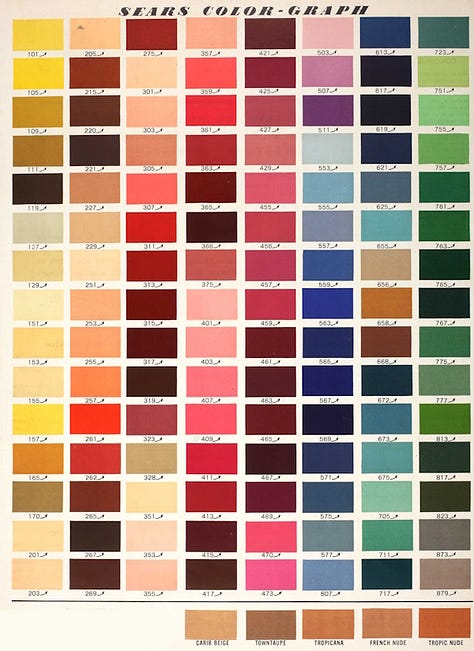
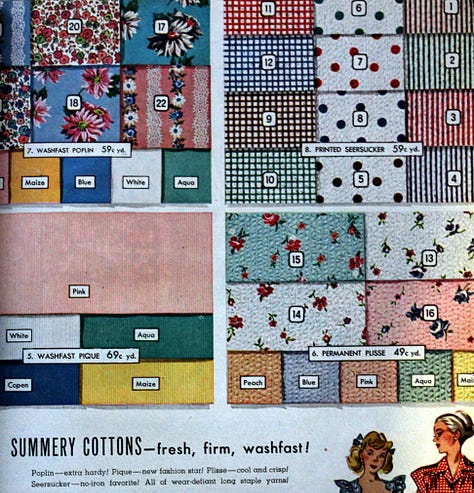
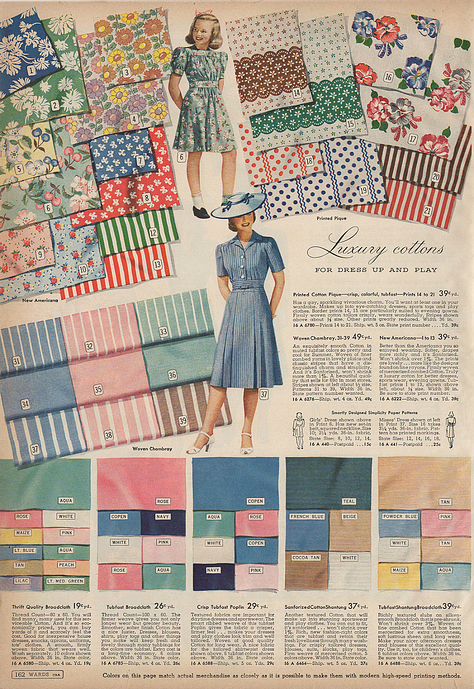
Primary colors seemed most popular in 40s, but pastels were favored in the warmer months, usually in cottons and rayons, such as seersucker, broadcloth, pique, chambray, spun rayon, and lots of rayon crepe. Classic prints included polka dots, stripes, gingham, and some florals, often with a white background. An interesting fabric I haven’t heard of elsewhere is rayon sharkskin, a fabric is still available today, though I’ve mostly found it in silk. It has a scaly look to it, though it probably isn’t nearly as rough as real sharkskin is!1
1940’s Summer Day Dresses
With rationing and fabric shortages brought on by the Second World War, the glitz and glamor that had mingled with the struggles of the 1930’s faded into a more practical note.
There came a time when excess fabric had to be kept out of designs: pockets could not be massive, for example, and the beloved dramatic sleeves of the 1930’s were kept to a minimum. Instead, this drama was replaced by that of shoulder pads, which became a must for most dresses, leaning into the “masculine militant look with [their] invention”.2
Skirts were a bit shorter now, and with less flare at the hem. Everything held more structure than the drapery of Art Deco, perhaps an outward sign of the strength many had to find during the war. Despite the shorter hemline, conservative was still a value held by most women and most designers, at least in day dress, and necklines were almost never very low, with sleeves usually coming in between quarter and elbow length.3
Summer dresses were found in the patriotic, or sailor, style, which may or may not be nautical inspired - what was necessary was “the eye-popping combination of the key patriotic colors of navy blue and white, and often bright red. . . . For a country embroiled in World War II this was yet another way to show one’s love and support for her homeland and men fighting to defend it.”4 Shirtwaists, peasant dresses, peplums, and wrap-fronts were also popular; the latter two were generally bit dressier as well as slimming.5
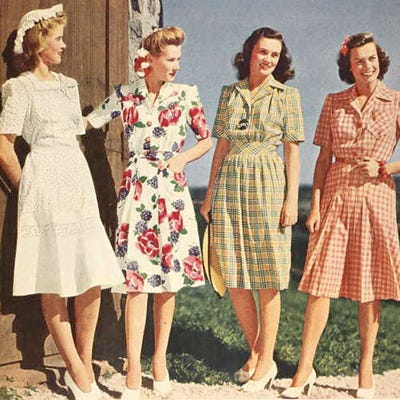
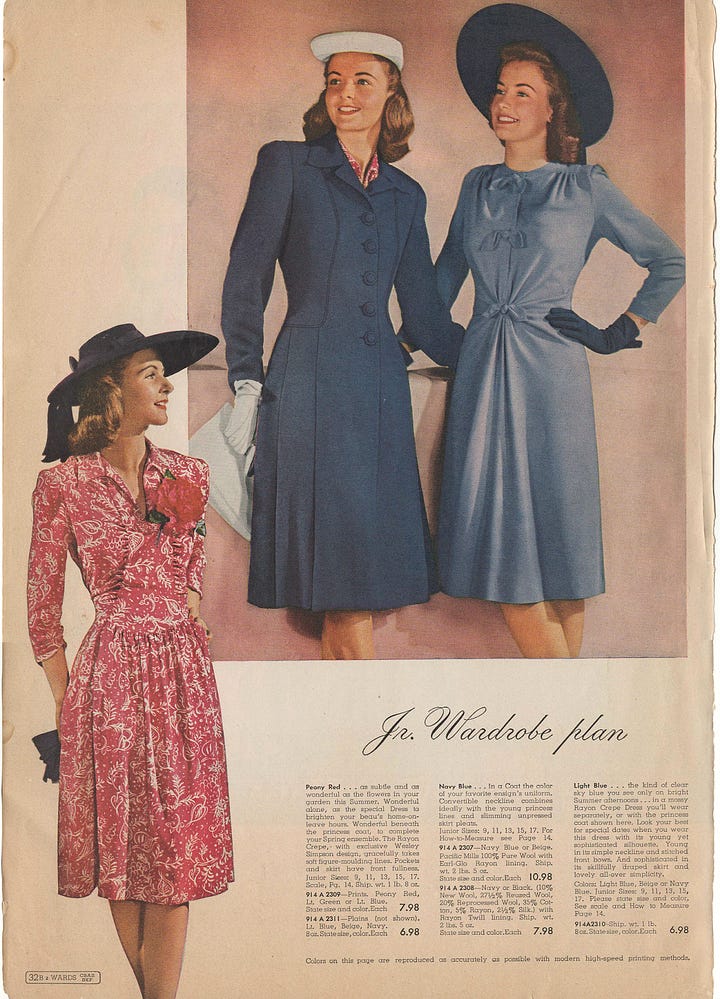
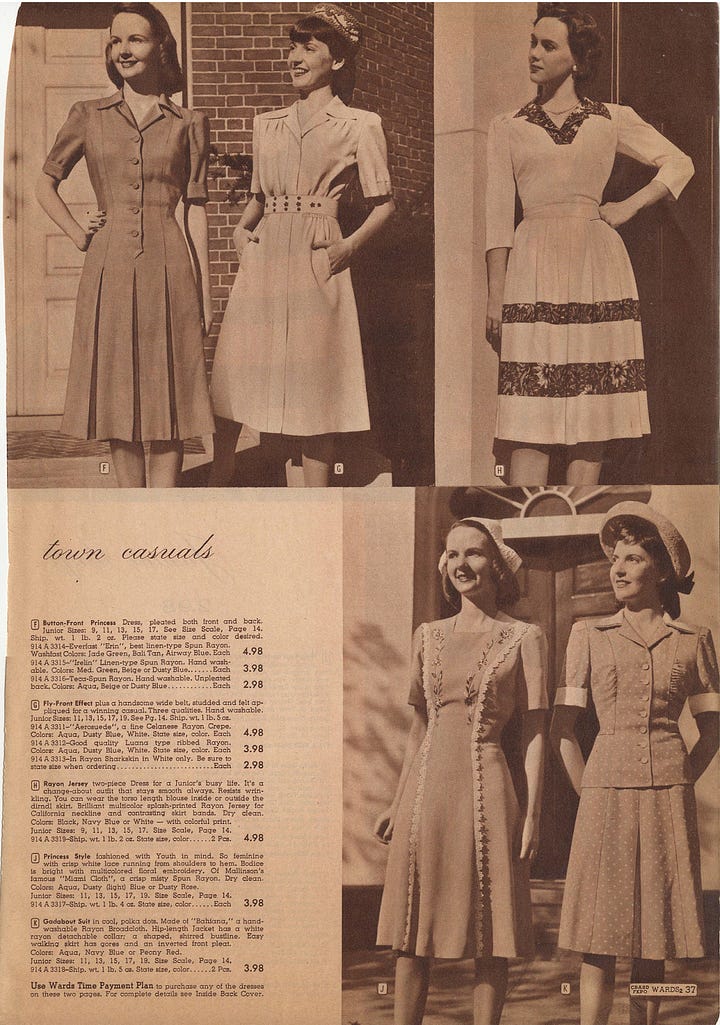
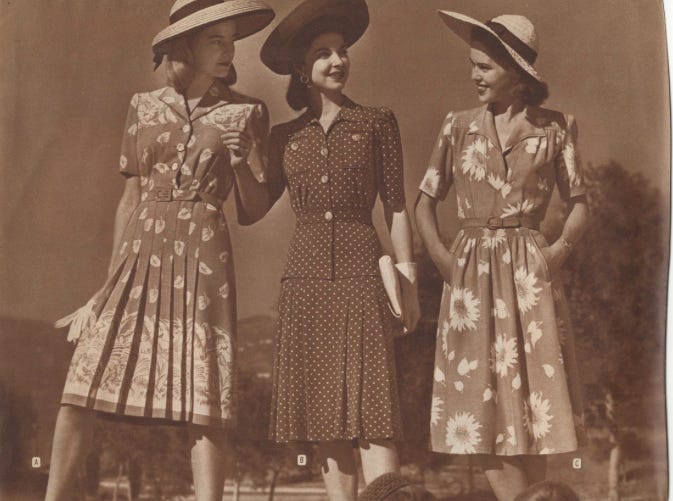
1940’s Summer Shoes
Spectator pumps are frequently seen in catalog photos from the time, usually with heel and toe in an accent color, often brown or blue, with the body of the shoe remaining white. As with previous decades, everything had a heel. Ankle straps also became popular in this time.
Since WWII efforts required all available leather, 1940s shoes were commonly made of heavy fabrics, straw, cork, rope, and reptile skins. Colors were brown, black, olive green, and light tan during the war years, with a splash of patriotic reds, whites, greens, and blues in the summer as well as pre and post wartime6
Some methods of making shoes summer-ready were to use open toes, perforations, and open designs.7
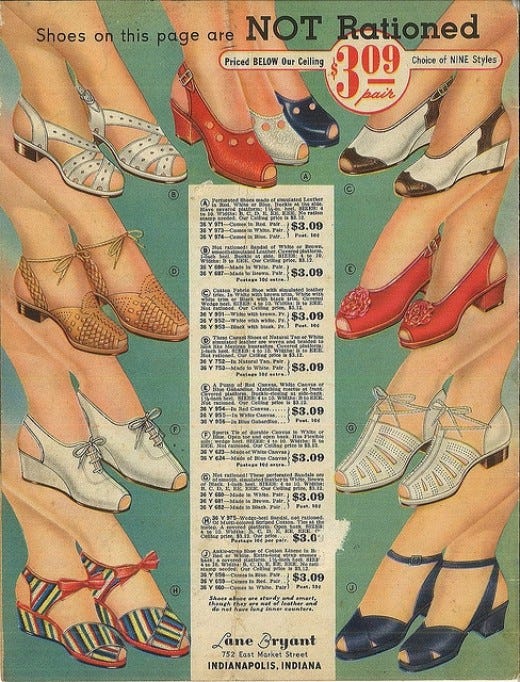
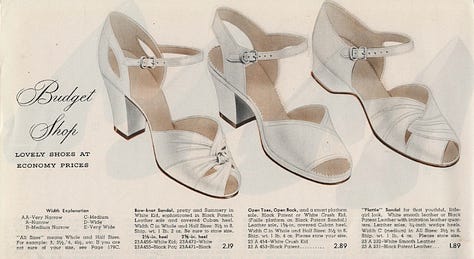
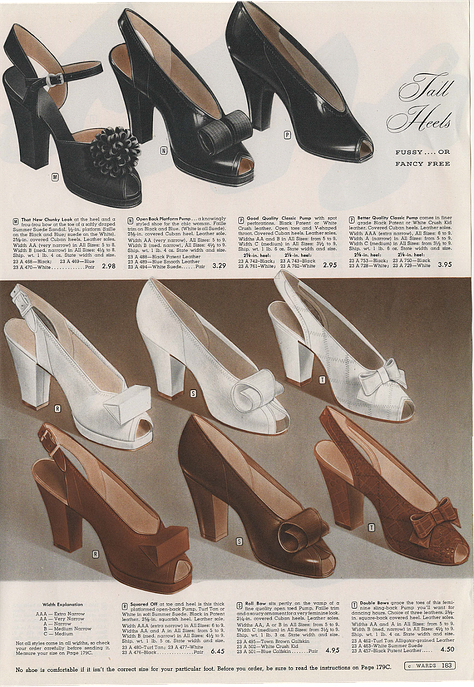
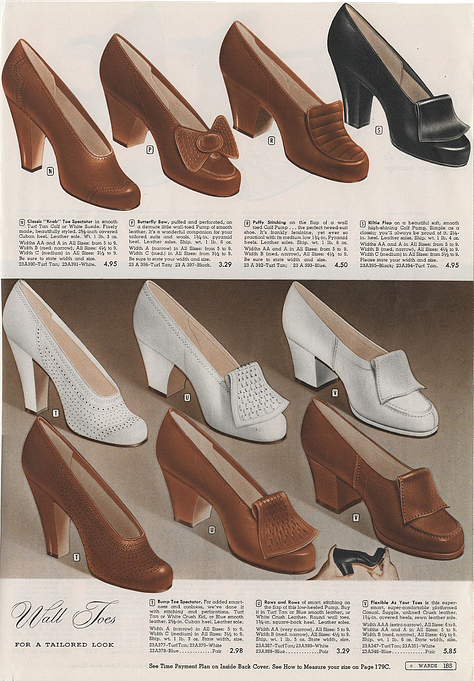
1950’s
1950’s colors and fabrics
There were few changes in fabrics in this decade, though more synthetics hit the market, and nylon joined the ranks of the popular cotton and rayon.
In the spring and summer, light pink, powder blue, cream, aqua, rose, maize (yellow), lilac, and kelly green were reflective of youth.8
In this era of extra-feminine garb, florals replaced many of the more abstract prints. Polka-dots, gingham, check, anything feminine was “in”, after the previous decade of presenting a strong, slightly masculinized face to the war, separation, losses, and rationing.
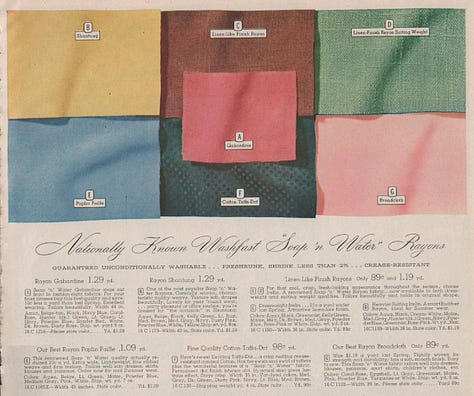
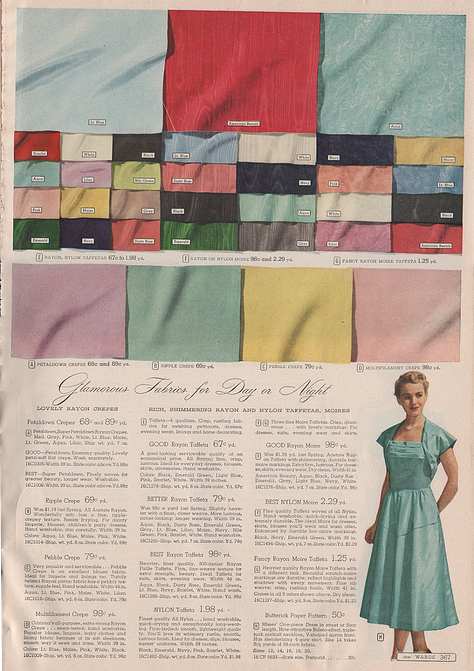
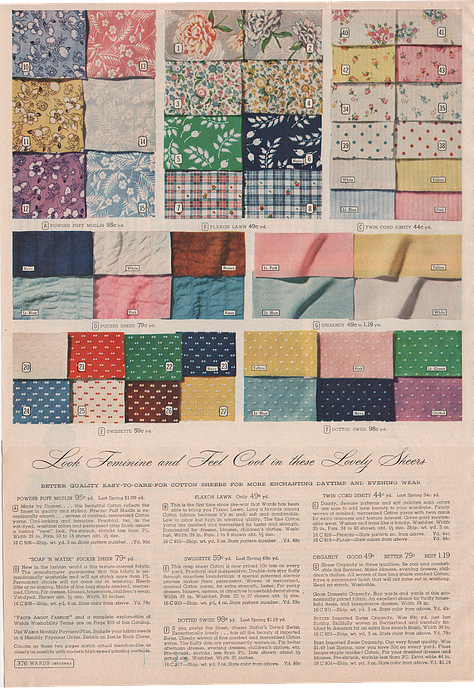
1950’s Summer Day Dresses
There isn’t much information on specifically summer day dresses, or even day dresses, for that matter. Excesses of fabric were back in full swing, no pun intended, in swing dresses and full-skirts that harkened back to the 1860’s and the traditional image of princesses, albeit shortened from the period. However, as seen in the photos below, it would seem day dresses were usually not that dramatic, preferring an A-line silhouette, with plenty of room to move.
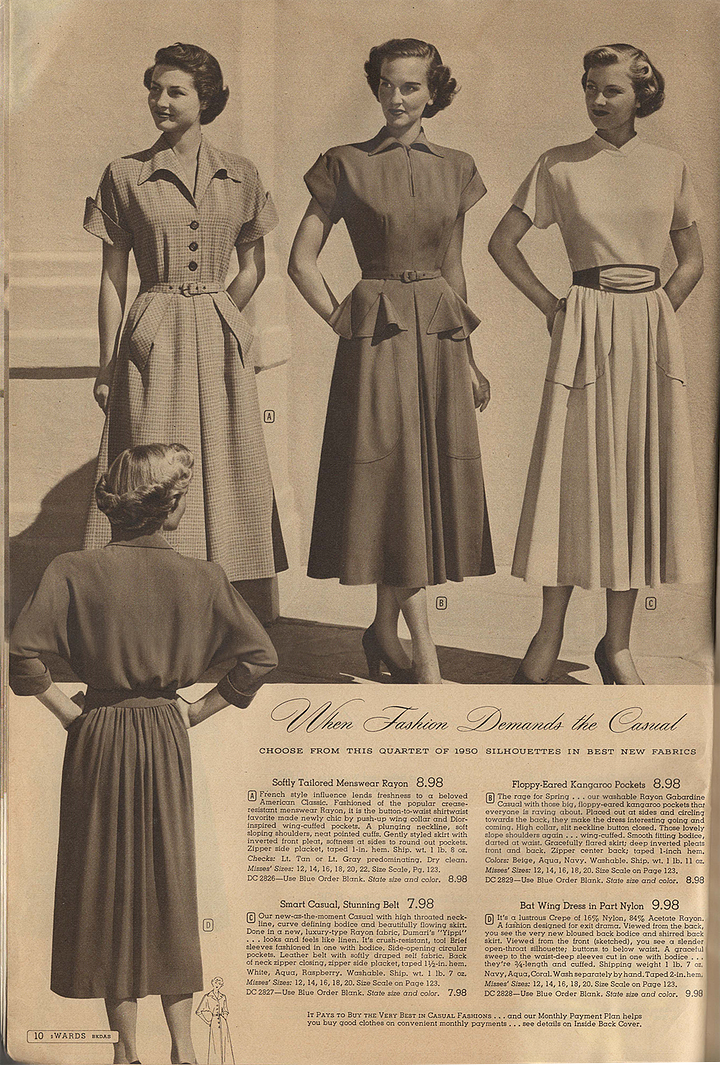
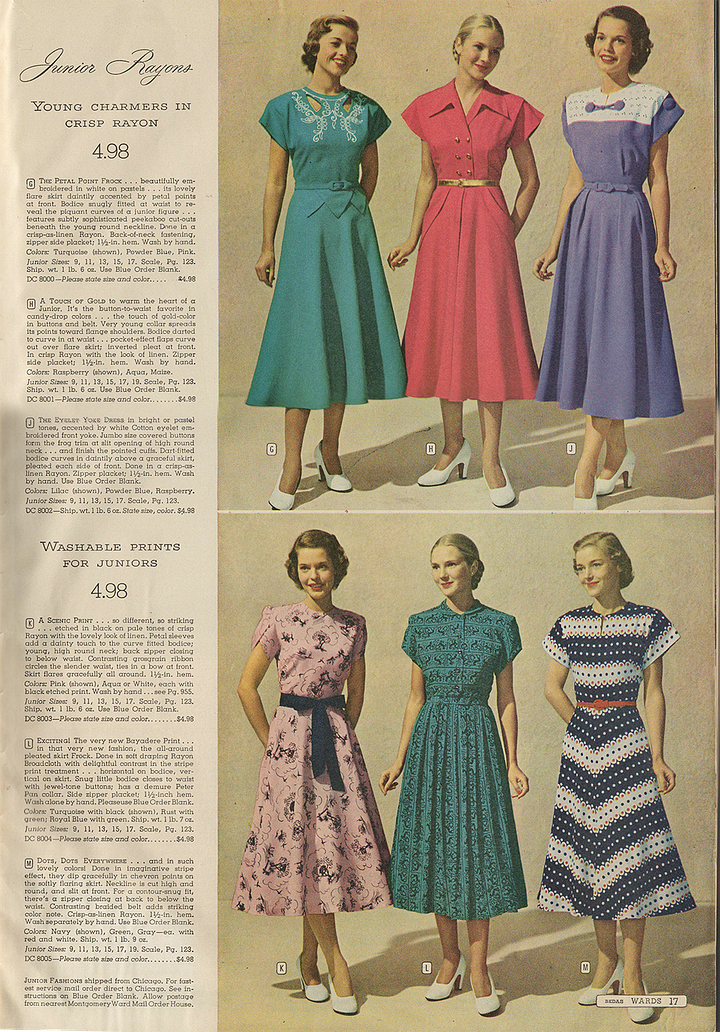
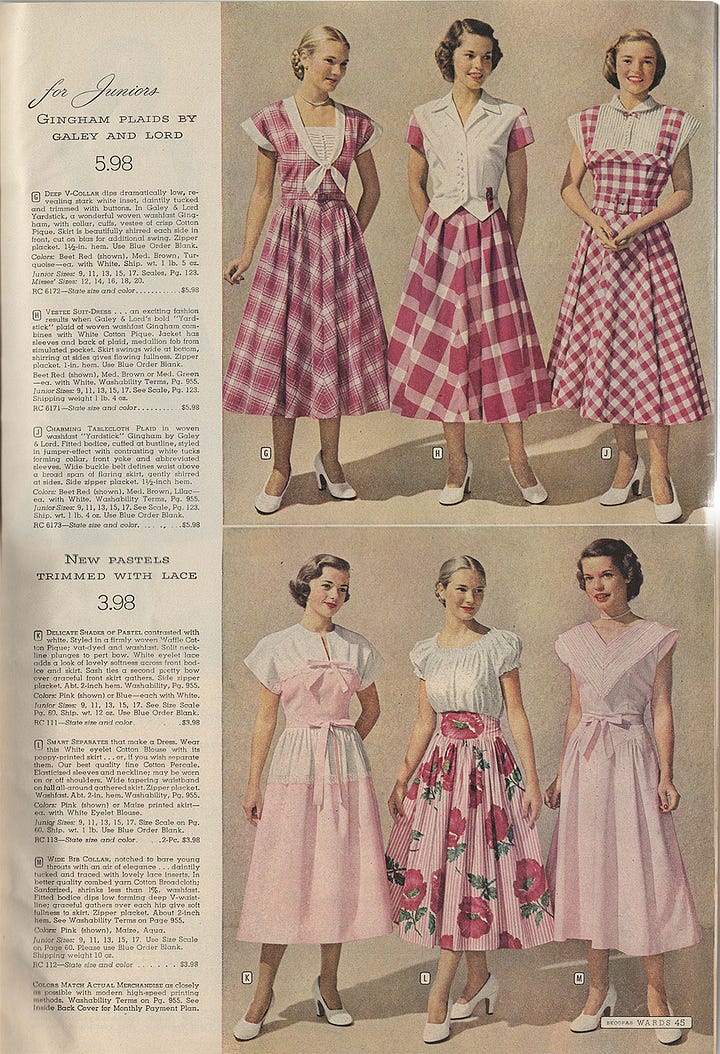
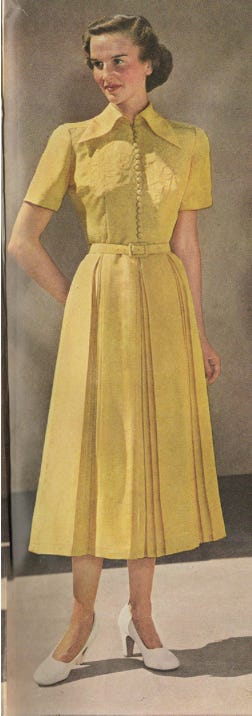
1950’s Summer Shoes
The 1950’s was the first decade to lean into flats, though women still tended to wear heels all day long, as they had for the better part of four centuries. Mule shoes, slingback sandals, and baby dolls might have been proper for streetwear, while less-formal occasions might call for ballet flats and the like. Though many styles came in brighter shades, and white is always a summer favorite, “Black and brown 50s shoes were the main choices for day wear….matching purses, gloves, belts, and even jewelry perfectly.”9

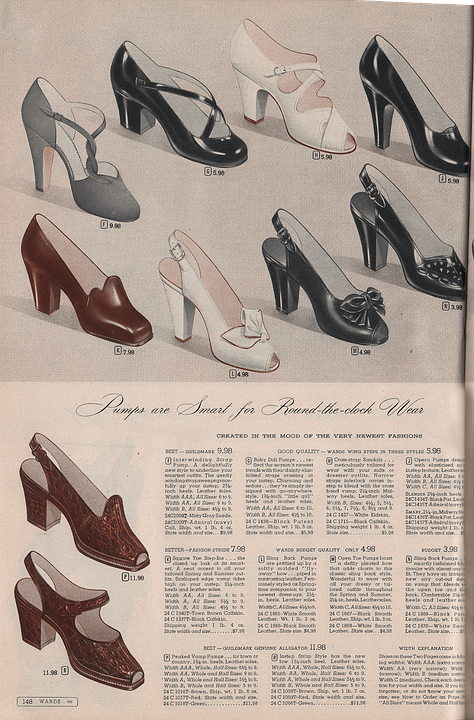
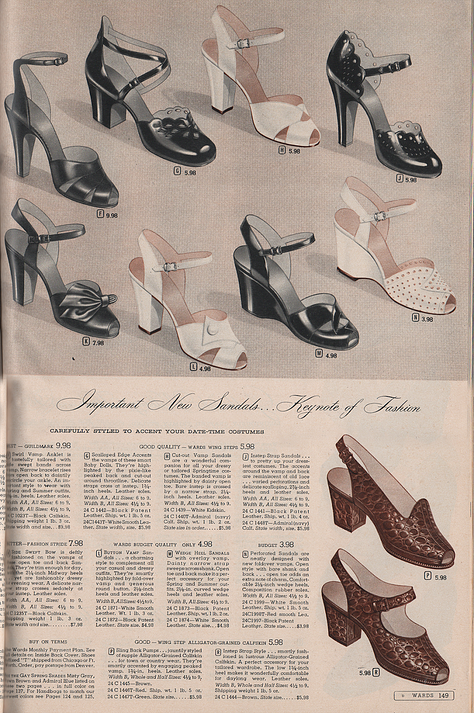
Thank you for reading! You can purchase the artwork from Windflower’s stories, such as Ransom, at the link below.
Windflower is fully supported by its audience. Instead of buying me a coffee, you can leave a donation which will go towards the purchase of fabric for interactive projects, where you’ll be able to vote on what historical dress or film costume I’ll recreate! Donations also help to continue creating Windflower’s content and to support the local Latin Mass.
Please consider subscribing and sharing with your friends. Thank you, and God bless!
https://vintagedancer.com/1940s/1940s-fabrics-colors-fashion/
https://glamourdaze.com/2019/07/top-summer-dresses-from-1940-to-be-seen-in-the-usa.html
https://www.ohsodelightful.com/what-they-wore-1940s-summer/
https://www.ohsodelightful.com/what-they-wore-1940s-summer/
https://www.classiccriticscorner.com/classic-movies/1940s-summer-dress
https://www.classiccriticscorner.com/classic-movies/1940s-summer-dress
https://www.vintage-retro.com/1940s-dress-for-ladies-what-to-wear-in-summer/
https://vintagedancer.com/1940s/10-popular-1940s-shoes-styles/
https://thevintagewomanmagazine.com/1940s-summer-styles/
https://vintagedancer.com/1950s/1950s-fabrics-colors-in-fashion/
https://vintagedancer.com/1950s/1950s-womens-shoes-style/





